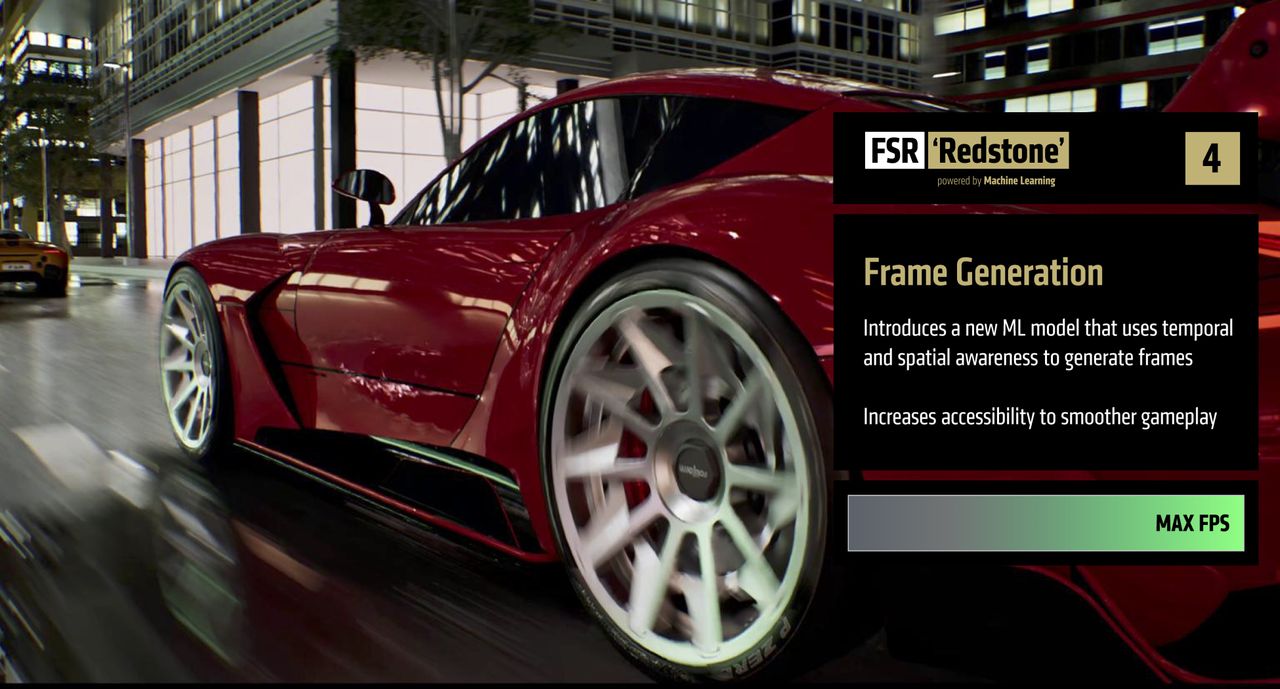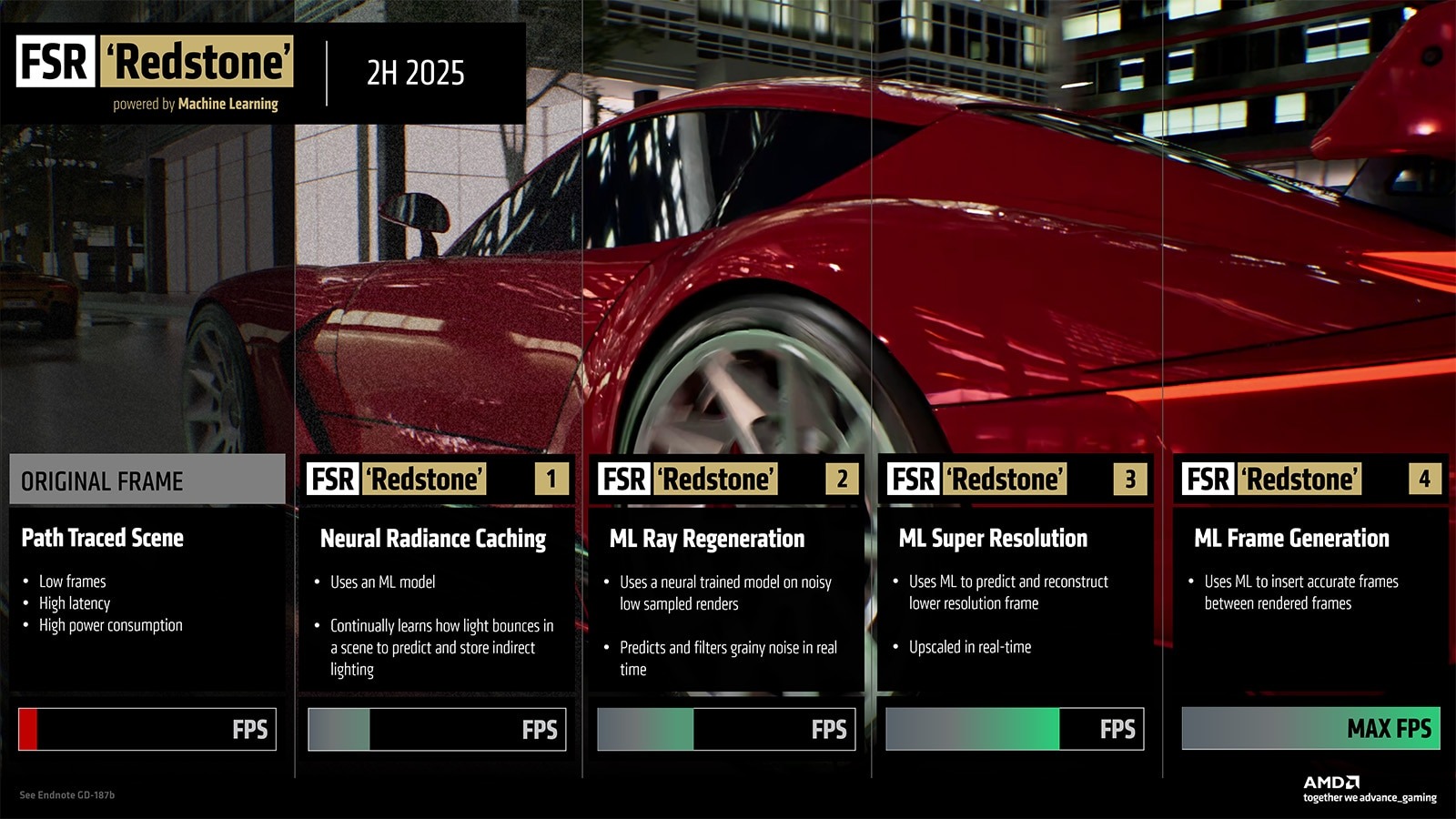
AMD’s latest FidelityFX Super Resolution (FSR) update might look like a routine maintenance patch, but under the hood, it’s setting the stage for one of the company’s most ambitious upgrades yet. FSR 3.1.4, released this week, folds in fixes to AMD’s temporal upscaler while quietly wiring in support for the upcoming “Redstone” suite of AI-driven rendering technologies that are due later this year.
The most immediate change is a reduction in ghosting on newly disoccluded pixels, or previously hidden ones that suddenly come into view. That's a problem that’s long plagued FSR in fast camera pans and dense environments. AMD says the new approach should produce cleaner, sharper images when objects move quickly or the viewpoint shifts abruptly. Alongside that comes a signed, easily upgradable DLL, part of the “FSR 4 driver upgrade” system, which should make future updates far less painful for developers already shipping FSR 3.
That’s important because Redstone, first teased at Computex 2025, will form the backbone of FSR 4. The package folds four ML-powered features into AMD’s rendering pipeline: Neural Radiance Caching to accelerate global illumination, ML Ray Regeneration to rebuild ray-traced detail from sparse samples, ML Super Resolution to replace the existing upscaler with a machine-learning-powered variant, and ML Frame Generation to interpolate entirely new frames between rendered ones. It’s a direct challenge to Nvidia’s DLSS 4 stack, with some features, like ML Ray Regeneration, echoing Nvidia’s own Ray Reconstruction.

Officially, Redstone will debut on RDNA 4 GPUs, from the Radeon RX 9060 through the RX 9070 XT, thanks to the architecture’s expanded AI compute capabilities. AMD hasn’t committed to wider support, but given how FSR 4’s upscaler was unofficially modded onto RDNA 3 hardware, it’s hard to imagine the enthusiast community not attempting the same here. AMD has said FSR 4 should be a drop-in upgrade for most FSR 3 titles, so maybe the players won't need to rely on OptiScaler that much.
Anyhow, to help developers prepare, AMD has refreshed its Unreal Engine 5.6 plugins for both FSR 3.1.4 and Radeon Anti-Lag 2. The latter is designed to cut system latency in GPU-bound scenarios and pairs naturally with ML Frame Generation, which can otherwise add input delay. This positions studios to ship FSR-enabled games now and enable Redstone later with minimal friction.
There’s still no hard release date for FSR Redstone beyond a vague “H2 2025,” but AMD’s move to seed 3.1.4 ahead of time suggests it wants the groundwork laid well before the switch is flipped. So far, the only public demo shows a Redstone-enhanced automotive scene, with ML Frame Generation smoothing the motion between real and generated frames. How the tech fares in shipping games is still an open question, but if AMD delivers, Redstone could finally close the gap—and maybe even gain ground—on Nvidia’s AI rendering lead.
Follow Tom's Hardware on Google News to get our up-to-date news, analysis, and reviews in your feeds. Make sure to click the Follow button.







